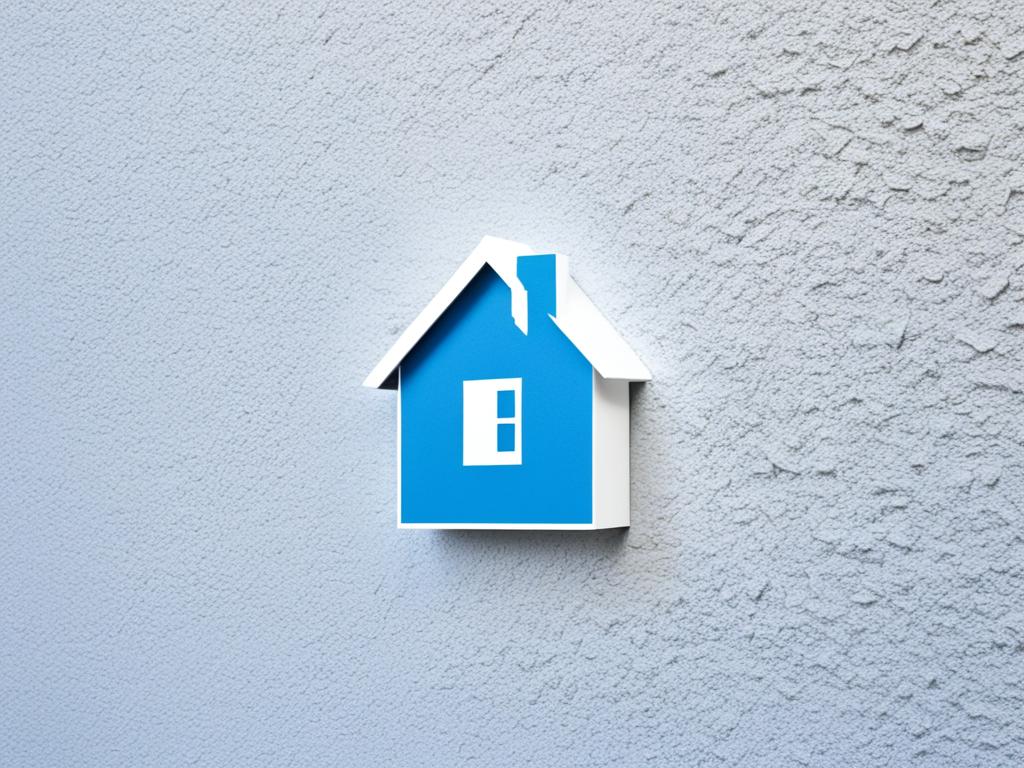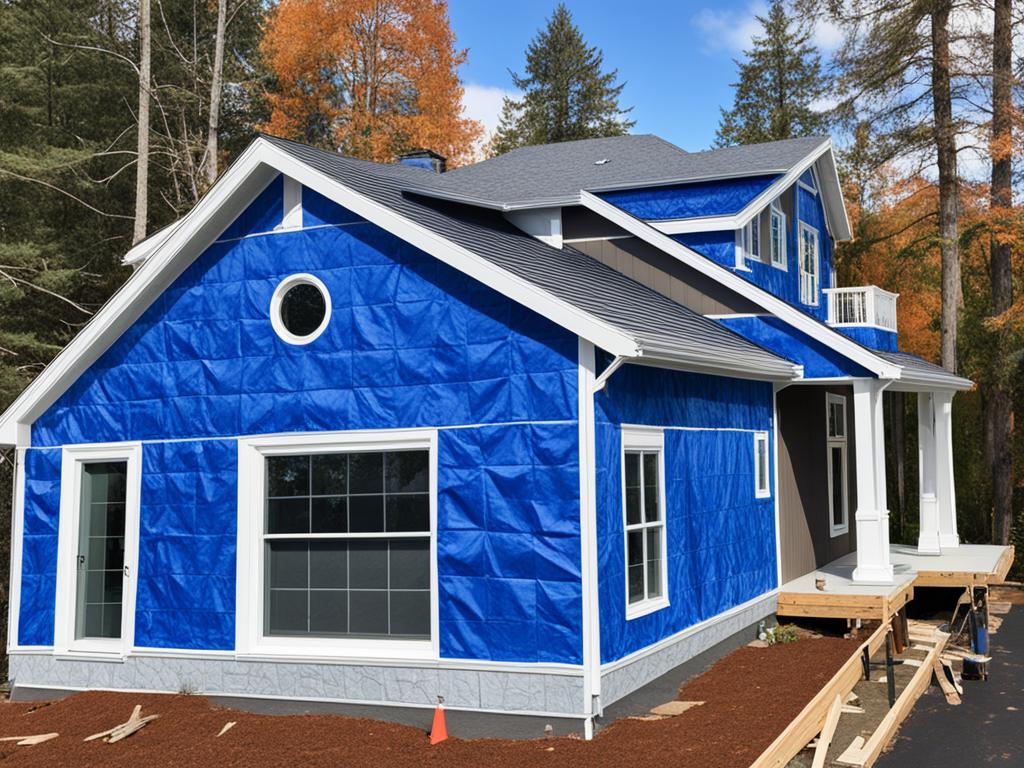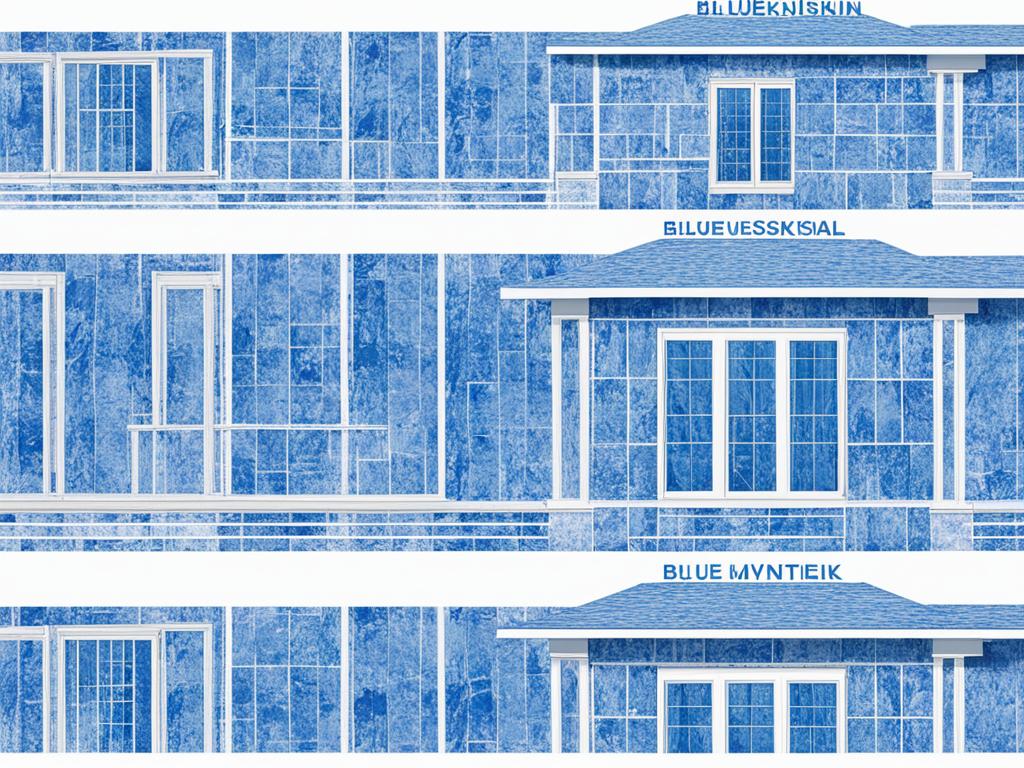When it comes to choosing a weather-resistant barrier for your home, the debate between Blueskin house wrap and Tyvek is a common one. Both products claim to offer superior protection against moisture infiltration and air leakage. But which one is truly the best choice for your home? Let’s compare the key differences and benefits of Blueskin house wrap and Tyvek to help you make an informed decision.
Key Takeaways:
- Blueskin house wrap and Tyvek are both weather-resistant barriers commonly used in construction.
- Blueskin excels in airtightness, waterproofing, and durability in severe weather conditions.
- Tyvek offers breathability, cost-effectiveness, ease of installation, and versatility.
- Your choice between Blueskin and Tyvek depends on specific needs, climate conditions, and project requirements.
- Investing in quality housewrap is crucial for the long-term durability and energy efficiency of your home.
Understanding the Functionality of Housewrap: How Does It Work?
Housewrap is a synthetic material that is applied to the exterior walls of a building before the siding is installed. Its main function is to act as a protective barrier against moisture infiltration.
Housewrap achieves this through several key functionalities:
- Water Resistance: Housewrap provides a barrier that prevents water from seeping into the walls. This essential feature protects the structural integrity of the building and helps prevent issues such as rot, mold, and decay.
- Breathability: Although it keeps water out, housewrap also allows water vapor to escape from the walls. This breathability helps prevent the buildup of moisture within the building, reducing the risk of mold growth and maintaining a healthier indoor environment.
- UV Resistance: Housewrap is designed to withstand exposure to the sun’s ultraviolet (UV) rays. This resistance helps protect the underlying materials from degradation and extends the lifespan of the wall assembly.
- Drainage: Some housewrap products incorporate drainage features, such as channels or weep holes, to redirect water away from the wall. This helps prevent water from pooling and provides an additional layer of protection against moisture infiltration.
Why are these functionalities crucial?
“Properly functioning housewrap is essential for maintaining the integrity and durability of your home’s walls. By preventing moisture infiltration, allowing water vapor to escape, resisting UV damage, and incorporating effective drainage, housewrap helps protect your building from potential damage, ensures a healthier living environment, and contributes to the long-term performance of your home.”
Now that we understand the functionality of housewrap, let’s explore its importance and necessity for your home in the following section.
Is Housewrap Essential for Your Home? Exploring Its Necessity
Housewrap is not just an optional add-on for your home; it is a crucial component that can significantly impact the longevity and energy efficiency of your building.
One of the primary functions of housewrap is moisture protection. By preventing water from penetrating the walls, it helps prevent issues like rot and mold, which can damage the structural integrity of your home. This moisture barrier is especially important in regions with high rainfall or high humidity levels.
Furthermore, housewrap acts as an additional layer of insulation for your home. It helps improve energy efficiency by reducing air leakage and heat transfer through the walls. This extra insulation can lead to reduced utility costs and a more comfortable indoor environment.
It’s also worth noting that many building codes require the use of housewrap as a mandatory step in the construction process. Compliance with these codes ensures that your home meets essential standards for moisture protection and energy efficiency, providing you with peace of mind.
Lastly, having proper moisture barriers and energy-efficient features can significantly increase the resale value of your home. Potential buyers recognize the importance of these features and are willing to pay a premium for homes that prioritize moisture protection and energy efficiency.

Overall, housewrap plays a crucial role in protecting your home from moisture damage, improving energy efficiency, complying with building codes, and increasing resale value. It is an investment that provides long-term benefits and should not be overlooked in the construction or renovation process.
Blueskin House Wrap vs Tyvek: Comparing the Options
When comparing Blueskin house wrap and Tyvek, it’s important to consider their respective benefits. Tyvek is known for its breathability, cost-effectiveness, ease of installation, versatility, and wide availability. It offers excellent UV resistance, durability, and repairability.
On the other hand, Blueskin excels in airtightness, waterproofing, vapor barrier properties, and durability in severe weather conditions. It provides a tighter seal against air and moisture infiltration, making it ideal for regions with heavy rainfall or when airtightness is a priority.
Ultimately, the choice between Blueskin and Tyvek depends on your specific needs, climate conditions, and project requirements.

| Benefits | Tyvek House Wrap | Blueskin House Wrap |
|---|---|---|
| Breathability | ✓ | |
| Airtightness | ✓ | |
| Waterproofing | ✓ | |
| UV Resistance | ✓ | |
| Vapor Barrier Properties | ✓ | |
| Durability | ✓ | ✓ |
| Severe Weather Performance | ✓ |
Conclusion
In conclusion, both Blueskin house wrap and Tyvek offer a range of benefits when it comes to protecting your home from moisture infiltration and air leakage. Tyvek stands out for its breathability, cost-effectiveness, and versatility, making it a popular choice among homeowners and builders.
On the other hand, Blueskin excels in airtightness, waterproofing, and durability, particularly in severe weather conditions. Its superior performance in preventing air and moisture from penetrating the walls makes it an ideal choice for regions with heavy rainfall or when airtightness is a priority.
When deciding between Blueskin and Tyvek, it is essential to consider the specific needs of your project, the prevailing climate conditions, and the desired functionalities. If breathability, cost-effectiveness, and versatility are paramount, Tyvek may be the right choice. However, if airtightness, waterproofing, and durability in severe weather conditions are crucial, Blueskin is the way to go. Ultimately, investing in quality housewrap is vital for the long-term durability and energy efficiency of your home.
FAQ
What is the difference between Blueskin house wrap and Tyvek?
What is the main functionality of housewrap?
Is housewrap essential for my home?
What are the benefits of Tyvek house wrap?
What are the benefits of Blueskin house wrap?
Source Links
- https://www.greenbuildingadvisor.com/question/are-the-more-exotic-wrbs-any-better-than-tyvek
- https://www.finehomebuilding.com/project-guides/insulation/nine-water-resistive-barriers-worth-knowing-about
- https://gorillaexterior.com/blueskin-vs-tyvek-housewrap/
